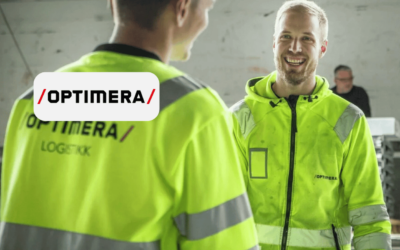Internal control – 8 requirements for systematic HSE work

The purpose of internal control is to promote improvement work in the businesses in Norway. Simply put, you can say that the regulation is a detailed explanation of how a law must be followed and implemented.
The purpose of an internal control regulation
It may be a challenge for many to satisfy the requirements of the regulation. A regulation is otherwise a legally binding regulation based on laws.
The internal control regulation is a regulation of the HSE legislation. The regulation tells concretely what internal control entails and what requirements are set, and it sets requirements for prevention through improvement.
To help you and your business, we give you 11 tips to get you started when choosing a quality system.
What is internal control?
Internal control must ensure that the company's routines and systems function optimally, and must capture any problems and challenges that arise. Internal control is systematic (regular and planned) measures to ensure that the company's activities are in accordance with HSE legislation.
Some would call this a management system, and therefore the leadership role becomes important ahead of the acquisition of a quality system.
To help you and your business, we give you 11 tips to get you started when choosing a quality system.
8 tips and requirements for systematic HSE work
There are 8 requirements for the HSE work and of these, 5 must be documented. Documentation can, for example, be procedures, instructions, permits, certificates of competence, certificates, recorded incidents, carried out risk assessments, process layouts with responsible persons, etc.
Requirement 1 – Overview
The business must ensure that the laws and regulations in health, environmental and safety legislation that apply to the business are available, and have an overview of the requirements that are of particular importance to the business.
Our tips
This can easily be solved with a module in document management . There you can create links that point directly to Lovdata and the Norwegian Labor Inspection Authority.
Requirement 2 – Knowledge
The business must ensure that the employees have sufficient knowledge and skills in systematic health, environmental and safety work, including information about changes.
Our tips
Enter updated HSE information in the TQM document module . You can also enter a training plan in the same module. When there is a change to important HSE information, you can request a read confirmation from all employees. Employees will then be notified by phone and email that they must confirm that they have read and understood the new changes.
Requirement 3 – Participation
The business must ensure that the employees contribute so that combined knowledge and experience is utilized.
Our tips
Through staff meetings and HSE meetings, all employees are involved in HSE work and improvement work. Meetings can be planned in the Activity Planner module. Employees will also contribute when they submit improvement proposals and deviations via the Incident Management module.
Requirement 4 – Objectives
The business must set targets for health, environment and safety.
Our tips
It is only natural that management itself participates in HSE work, while at the same time allocating sufficient resources. HSE strategy, goals and visions should be directly included in the organization's management strategy. HSE goals should therefore be credible, concrete, measurable and achievable.
The HSE goals are entered into the document module in TQM .
Requirement 5 – Organization and division of responsibilities
Our tips
When the processes are drawn up in TQM then you have shown who is responsible for which process. It is also a good idea to include an organizational chart in the document module. It is possible to easily present a list of the distribution of responsibilities in the business.
Requirement 6 – Map
Our tips
Safety rounds can be documented with checklists in TQM Risk assessments can be documented with a risk management module.
Requirement 7 – Implementation
Our tips
With the Incident Management module, you can report incidents such as deviations and observations. This is also easily done with TQM APP on your phone . In many cases, measures are created as action plans. Measures help to improve HSE work, procedures and processes, among other things.
Requirement 8 – Monitor
Our tips
With the activity management module, you can enter times for when you want a review of the internal control. It can be an internal audit or management's review.
With the Checklist module, you can easily have checklists to be filled in to document the review.
It is the manager's responsibility that the internal control regulations are followed, and it is the employees' responsibility to contribute. In short, the point of the regulation is to set requirements for prevention through continuous improvement work. The internal control must be adapted to each organization in scope and design, but remember that the requirements are the same.
Related posts
11 steps to help you choose the right quality system
Investing in a quality system can quickly become a comprehensive process. For example, imagine buying your dream home....
Optimize your effective HSE transformation with 4human
Join Optimera's journey towards more efficient and digitalized HSE management with 4human Through a modern digital solution, Optimera has...
A guide to quality management trends for 2025
Discover the future of quality management in 2025! The world is changing rapidly, and quality management (QMS) must keep up. New technologies such as artificial...


